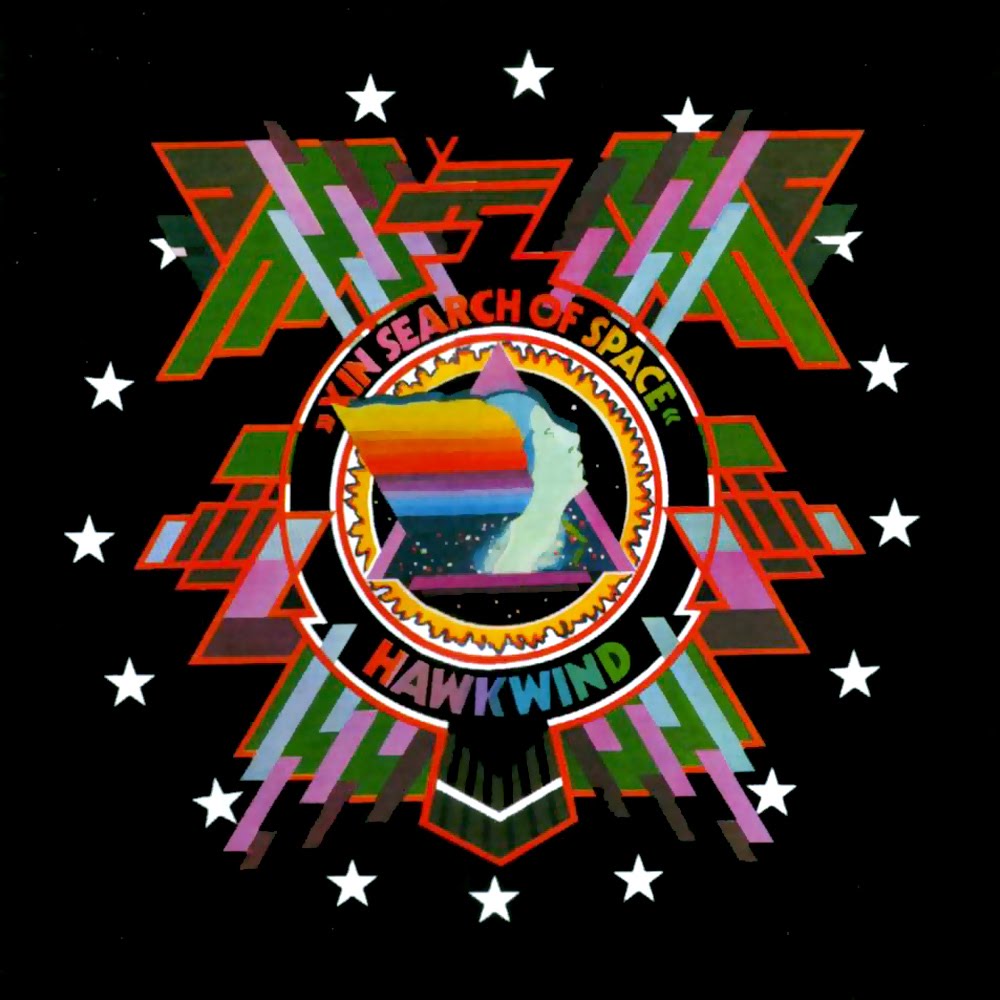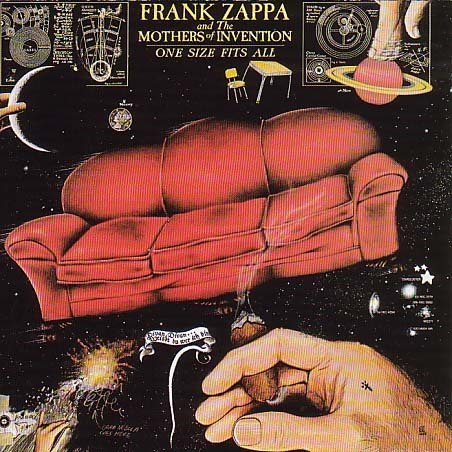What are you listening to and WHY might anyone be interested? (Vol.IX)
Posted by: Richard Dane on 01 January 2013
With 2013 upon us, it's time to start a fresh thread. I've gone back to an earlier thread title because often the "why" is the most interesting part of the post.
Anyway, links:
Volume VIII: https://forums.naimaudio.com/di...nt/12970396056050819
Volume VII: https://forums.naimaudio.com/di...6878604287751/page/1
Volume VI: https://forums.naimaudio.com/di...ent/1566878604097229
Volume V: https://forums.naimaudio.com/di...ent/1566878605140495
Volume IV: https://forums.naimaudio.com/di...ent/1566878605795042
Volume III: https://forums.naimaudio.com/di...ent/1566878607309474
Volume II: https://forums.naimaudio.com/di...ent/1566878606245043
Volume I: https://forums.naimaudio.com/di...ent/1566878607464290

François Couperin (1668-1733): Iddo Bar-Shaï (Piano)
Les Ombres Errantes
Soeur Monique
Le Tic-Toc-Choc, ou Les Maillotins
La Muse-Plantine
Le Rossignol-en-Amour
Double du Rossignol
Les Petits Ages - La Muse Naissante
Les Petits Ages - L'Enfantine
Les Tambourins
La Misterieuse
La Petite Pince-Sans-rire
La Logiviere
Le Dodo, ou L'Amour au Berceau
La Commere
Les Languers Tendres
Les Vergers fleuris
Les Rozeaux
L'Engageante
L'Ame-en peine
Les Moissonneurs
La Bandoline
Les Fauvetes Plaintives
Le Turbulent
La Couperin
Les Baricades Misterieuses
...before sunrise solitude.




On vinyl having arrived with my brother from america yesterday. Up there with his best. Sierra is one of his very finest songs.

| 2. Boccherini: String Quintet in C Major, G.349 - Andante con moto |
| 3. Boccherini: String Quintet in C Major, G.349 - Minuetto con grazia - Trio - Minuetto da capo |
| 4. Boccherini: String Quintet in C Major, G.349 - Allegro assai |
| 5. Boccherini: String Quintet in C Major, G.349 - Rondeau: Allegretto moderato |
| 6. Schubert: String Quintet in C Major, D.956 - Allegro ma non troppo |
| 7. Schubert: String Quintet in C Major, D.956 - Adagio |
| 8. Schubert: String Quintet in C Major, D.956 - Scherzo: Presto - Trio: Andante sostenuto |
| 9. Schubert: String Quintet in C Major, D.956 - Allegretto |
Franz Liszt (1811-1886): Jean Claude Pennetier (piano), Vox Clamantis, Jaan-Eik Tulve
Via Crucis (Version für Chor & Klavier)
Franz Liszt - one of the most important and influential artists of the 19th century (in my humble opinion). Like him or not, I do not think there are very many in his league with the ability to translate human emotion into a musical language (which is the essence of great music and what distinguishes music from technique or just notes really). We have his youth, his wild days, his romantic days and his end days where he gave up everything worldly and eventually secluded himself in an abbey near Rome to contemplate life.
A wondrous recording if you can stand quiet reflection and peace within your own solitude. There is too much to talk about here so I will make most of my comments based only on the Weinen, Klagen, Sorgen, Zagen piano piece which is referred to here by S 179. First off, I believe this is the wrong reference. Liszt wrote a Weinen, Klagen, Sorgen, Zagen - Praeludium nach J. S. Bach in 1859. This is the S 179 and not the one recorded here. It is a short, quiet piece that builds and builds with just one main climax in the end that reaches its apex. This is the piece that should have definitely been included on this recording as it is perfect for this theme. It is also one of my own favourite pieces that has had a profound effect on me.
Weinen, Klagen, Sorgen, Zagen is of course, a reference taken directly from Bach's early Cantata BWV 12. If roughly means weeping, wailing, lamenting, fearing. Liszt wrote the much longer Variationen über das Motif von Bach: 'Weinen, Klagen' S 180 in 1862 and they come to us as a reflection of Liszt working through the tragic loss of his daughter Blandine and coming to terms with his own suffering.
From the booklet notes with this CD, Klará Jirsová says it best as follows, "Here he depicts the differnet faces of suffering - tears, groans, distress of the heart, poignant sorrow, desire to be free of misfortune - by basing his discourse on the sad chromatic line of the opening chorus of Johann Sebastian Bach's Cantata BWV 12, which is very similar to the 'Crucifixus' of the B minor mass".
The last variation here also quotes the ending of BWV 12 with the choral 'Was Gott tut, das ist wohlgetan,' which roughly translates as 'What God does, that is done good.' A remarkable outcome for such devastating circumstances. Basically we are reading Liszt's diary and as with all great composers it is like meeting these characters from a better time in history when this wouldn't be possible in reality.
Vox Clamantis and Jaan-Eik Tulve offer an almost perfect choral rendering. The recording quality is very nice. Overall, a specialist recording probably aimed at people like me who love Liszt and especially relish and understand his late period.
Best Regards,
Doug


Franz Liszt (1811-1886): Jean Claude Pennetier (piano), Vox Clamantis, Jaan-Eik Tulve
Via Crucis (Version für Chor & Klavier)
Franz Liszt - one of the most important and influential artists of the 19th century (in my humble opinion). Like him or not, I do not think there are very many in his league with the ability to translate human emotion into a musical language (which is the essence of great music and what distinguishes music from technique or just notes really). We have his youth, his wild days, his romantic days and his end days where he gave up everything worldly and eventually secluded himself in an abbey near Rome to contemplate life.
A wondrous recording if you can stand quiet reflection and peace within your own solitude. There is too much to talk about here so I will make most of my comments based only on the Weinen, Klagen, Sorgen, Zagen piano piece which is referred to here by S 179. First off, I believe this is the wrong reference. Liszt wrote a Weinen, Klagen, Sorgen, Zagen - Praeludium nach J. S. Bach in 1859. This is the S 179 and not the one recorded here. It is a short, quiet piece that builds and builds with just one main climax in the end that reaches its apex. This is the piece that should have definitely been included on this recording as it is perfect for this theme. It is also one of my own favourite pieces that has had a profound effect on me.
Weinen, Klagen, Sorgen, Zagen is of course, a reference taken directly from Bach's early Cantata BWV 12. If roughly means weeping, wailing, lamenting, fearing. Liszt wrote the much longer Variationen über das Motif von Bach: 'Weinen, Klagen' S 180 in 1862 and they come to us as a reflection of Liszt working through the tragic loss of his daughter Blandine and coming to terms with his own suffering.
From the booklet notes with this CD, Klará Jirsová says it best as follows, "Here he depicts the differnet faces of suffering - tears, groans, distress of the heart, poignant sorrow, desire to be free of misfortune - by basing his discourse on the sad chromatic line of the opening chorus of Johann Sebastian Bach's Cantata BWV 12, which is very similar to the 'Crucifixus' of the B minor mass".
The last variation here also quotes the ending of BWV 12 with the choral 'Was Gott tut, das ist wohlgetan,' which roughly translates as 'What God does, that is done good.' A remarkable outcome for such devastating circumstances. Basically we are reading Liszt's diary and as with all great composers it is like meeting these characters from a better time in history when this wouldn't be possible in reality.
Vox Clamantis and Jaan-Eik Tulve offer an almost perfect choral rendering. The recording quality is very nice. Overall, a specialist recording probably aimed at people like me who love Liszt and especially relish and understand his late period.
Best Regards,
Doug


Would you recommend this Recording?
Would you recommend this Recording?
Hi Ragman, as I tried to convey near the end, I would wholeheartedly recommend this recording to those who would listen to or seek music that is reverential, inward looking, slow paced, thematic with strong religious overtones and like Liszt and/or Bach's Cantata's / themes and even going back to Gregorian chant to some degree. The range is wide going from a few solo piano works to the choral aspects. These are my views but with fair warning, I don't think this is for the uninitiated if any of the above is not your thing. For myself, after just one listen while preparing a nice breakfast this morning, I found I really enjoyed this recording but then again, I know and love this music and knew what I was to expect.
Best Regards,
Doug

On Vinyl
because I keep hearing that bloody ford ad

http://www.youtube.com/watch?v=njX9fn2iUI4
One of the first oratorios called 'Opera'
Excellent record.
Spent the last week-ish ripping a stack of CD/SACD's from a spot of retail therapy.......
Today's listening:

and

Not such a big fan of the harpsichord, though this is quite good.

Enjoying my 3rd play...
Debs

Jennifer Pike (Violin), Tom Poster (Piano)
Sonata for Violin and Piano no 1 in G major, Op. 78 by Johannes Brahms
Sonata for Violin and Piano no 1 in A minor, Op. 105 by Robert Schumann
Three Romances for Violin and Piano, Op. 22 by Clara Wieck Schumann
The cherub faced Jennifer holding her 1708 Matteo Goffriller. If Mona Lisa were smart enough she too would be holding a violin but she isn't. I think this photo would give ol' Mona a run for the money. Besides, it passes the eye test. Where ever you stand her eyes follow you around the room. Oh, both Jennifer Pike and Tom Poster are fabulous together here...


playing the Bononcini disc of this super 5 x CD box-set : )
Giovanni Bononcini (1670-1747)
La Nemica d'Armore fatta armante - Serenate à 3
ENSEMBLE 415 ~ Chiara Banchini
A pleasant operatic work of much voiced passion and sincerity with delicate and detailed accompany of violins, cellos, an archlute, a theorbe, doublebass, chef de chant, harpsichord and organ continuo…
Stays beautiful from start to finish : )
Debs

How's the sound, Kuma? All CD issues so far suffer from a grand that sounds more like a small upright. To me the technical sound quality pushes too much of Kempff's artistry into the realm of blandness.
Ej,
I do not own any CDs from this series, but I can see either later repress or CD versions get stripped of colours and body.
I got lucky on this *red Stereo* pressing which usually a lot more natural sounding as far as DG pressings from 60s go. That said, this recording doesn't have much of low end blooms or low keys resonance as contemporary closed mic'd today's recording. Tape hiss is highish and on the quiet passages the piano sounds a tad far but the tonal colour remains natural. This pressing has an excellent clarity with lovely note decays but never dry. ( Some of the Pollini pressings from the 70s are anemic and brittle sounding for instance )
I don't find them *bland* at all. In fact it has a lot of colours, subtle inflections and textures that keep me interested all the way through. His unassuming style gives a fresh spontaneous liveliness.
I think this is his best:


Dire Straits. Love Over Gold. On vinyl from 1982 . A great recording/production for critical listening with HPs.



On Vinyl

2 x CD (p)2001 ©2004 Glossa Music : )
Some slices need some chewing over but I do prefer wholemeal : )
Debs

2 x CD (p)2001 ©2004 Glossa Music : )
Some slices need some chewing over but I do prefer wholemeal : )
Debs
Heard this one on Amazon or Spotify and bought it as it smashed me in the corner. At home it turned out to be less great than I exxpected, but still somehow a special setting. Enjoy...

